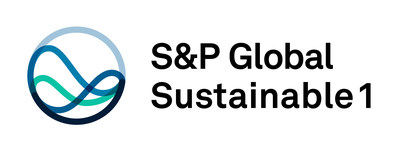Press Releases
- New S&P Global Sustainable1 ("S1") dataset measures current and future climate hazard exposures of U.S. localities and their Muni bonds through the 2090s.
- According to S1 data, 21% of US counties are projected to have compound material exposure to two or more acute climate hazards of fluvial or coastal flooding, tropical cyclone, and/or wildfire by the 2050s.
- According to S1 data, over the next 30 years, states, counties, and cities in California and the southwestern US, Rocky Mountains, and Gulf coast will face the highest exposures to multiple climate hazards, including extreme heat, severe drought, wildfire conditions, tropical cyclones, coastal flooding, and water stress.
NEW YORK, April 29, 2024 /PRNewswire/ -- S&P Global Sustainable1 announced today the launch of Municipal Climate Physical Risk, a new solution helping investors, local governments, and other market participants navigate critical decisions on climate change.
The dataset measures climate hazard exposures for U.S. local governments and their general obligation bonds, spanning 3,100+ U.S. counties, all 50 states, and 47,000 general obligation bond issues.
It covers nine climate hazards (extreme heat, extreme cold, wildfire, water stress, drought, coastal flood, fluvial flood, pluvial flood, and tropical cyclone) across four climate scenarios (SSP1, SSP2, SSP3, SSP5), averaged for decadal time periods from the 2020s through 2090s.
Steven Bullock, Managing Director, Global Head of Research and Methodology at S&P Global Sustainable1 said:
"From high water stress in the West to compound exposure to flooding and tropical cyclones in the Southeast, states, cities, and towns across the U.S. are seeing an increasing frequency and severity of extreme weather events caused by climate change. This poses growing risks to municipal bonds which often have long maturities and therefore higher vulnerability to the longer-term effects of climate change compared to other investments. S&P Global Sustainable1's Municipal Climate Physical Risk dataset provides Muni market participants a key tool to help understand their exposure to the physical risks of climate change and allows climate-focused investors with diverse equity and fixed income holdings to now incorporate Muni climate exposures."
The dataset includes exposure scores describing the relative exposure of a region to climate change hazards in relation to the U.S. overall as well as globally, and exposure metrics calculating the percentage of a region's GDP and population exposed to climate hazards.
An analysis of the climate hazard exposure of all municipal bonds in the dataset shows that:
- By the 2050s, 21% of U.S. counties are projected to have compound material exposure to two or more acute climate hazards (event-driven hazards including increased severity of extreme weather events such as tropical cyclones, fluvial and coastal flooding, and wildfire) in a SSP3-7.0 mitigation scenario where temperatures and emissions continue to rise.
- By the 2050s, states, counties, and cities in California and the southwestern US, Rocky Mountains, and Gulf coast will face the highest exposures to multiple climate hazards, including extreme heat, severe drought, wildfire conditions, tropical cyclones, coastal flooding, and water stress.
- Drought conditions now affecting approximately 2% of the US population, will expand to 30% of the US population by the 2050s. Nearly half of US states will also face severe water stress affecting on average 40% of their residents.
- Pluvial flooding is also on the rise. By 2050 6% of US counties will have material GDP exposure to pluvial (extreme rainfall-related) flooding—a number which rises to 60% by 2090.
About S&P Global Sustainable1
S&P Global Sustainable1 is the central source for sustainability intelligence from S&P Global. Sustainable1 matches customers with the sustainability products, insights and solutions from across S&P Global's divisions to help meet their unique needs. Our comprehensive coverage across global markets combined with in-depth sustainability intelligence provides financial institutions, corporations and governments with expansive insight on business risk, opportunity, and impact as we work towards a sustainable future. Our data and well-informed point of view on critical topics like energy transition, climate resilience, positive impact and sustainable finance allow us to go deep on the details that define the big picture so customers can make decisions with conviction.
Media Contact:
Ray McConville
+1 917-865-2692
raymond.mcconville@spglobal.com
SOURCE S&P Global Sustainable1
